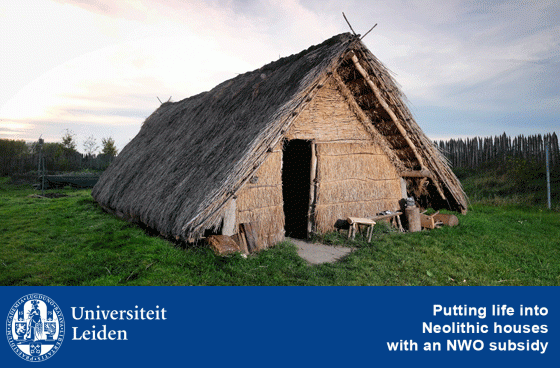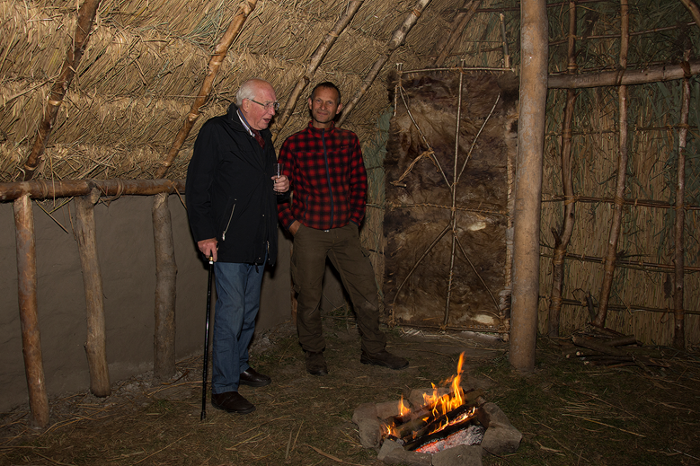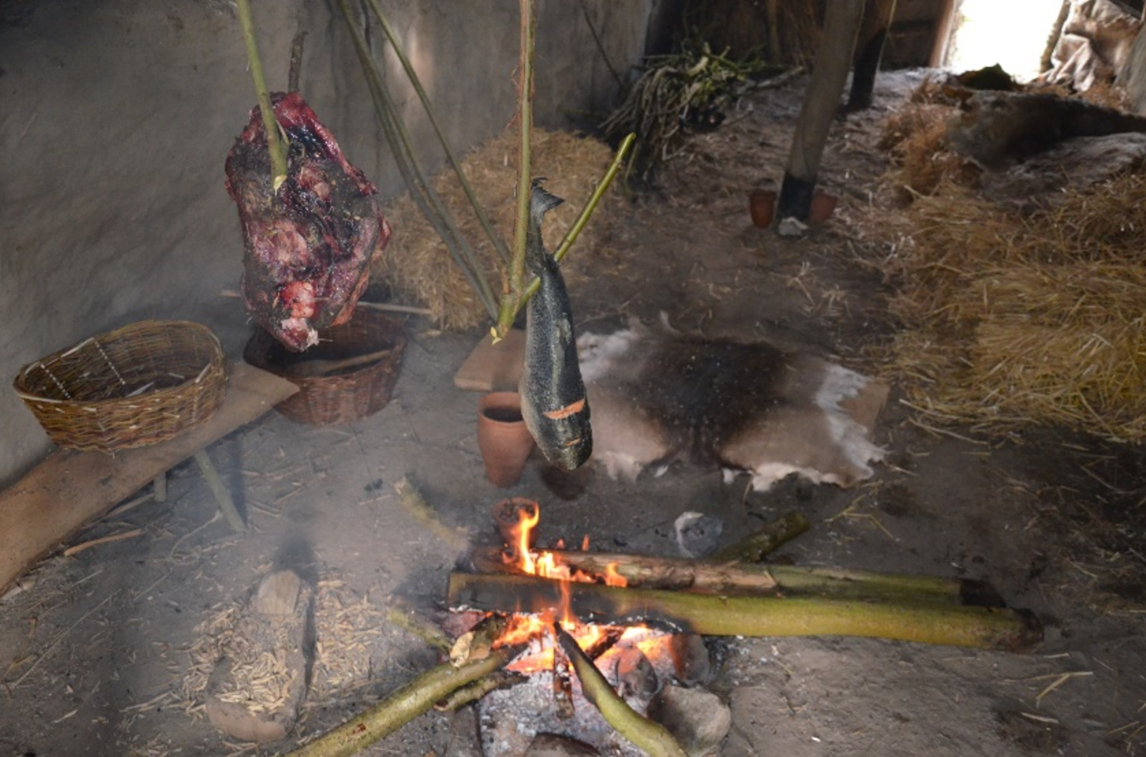
Putting life into Neolithic houses with an NWO subsidy: ‘We will bring detail in our image of past domestic activities’
Archaeologist Annelou van Gijn received an NWO Archeologie Telt grant to investigate domestic craft and subsistence activities of late Neolithic peoples in the coastal area of the Netherlands. EXARC is partner in the project.
Experimental Archaeology
The project heavily relies on experimental archaeology: “Exploring past technology by experiment, doing things together, is an excellent way of creating a scientific community in which both professional archaeologists and the general public can thrive” explains Annelou. The volunteers of Masamuda, a recently opened educational archaeological open-air museum (and EXARC member) in the town of Vlaardingen, are therefore central to the project. ‘Together with them, we will bring life to the reconstruction of a Vlaardingen house that we jointly built in 2016’

Figure 1. Masamuda volunteers work on roofing the reconstructed house
Details about past domestic life
‘The goal of this project is to understand in more detail what daily life was like for the late Neolithic inhabitants of the Rhine/Meuse delta’. Scientific archaeological studies have shown what the environment was like, which plants were used and which animals consumed. However, we know very little what the dwellings looked like inside, what kind of craft activities and culinary practices were carried out, what the tool kits looked like and how people may have moved about in this water-rich landscape in order to obtain the resources they needed. By sticking close to our basic archaeological observations, such details of past life have often escaped us and our imagination is failing us. Yet, it is the details of human life that visitors of open-air museums like Archeon (also EXARC member) often asked about: what kind of dishes did they cook, what kind of tools did they make and use and what kind of clothes did they wear. Questions that are not so easy to answer.

Figure 2. The still empty interior of the house
Science and imagination
This project tries to enrich our knowledge of daily life by a combination of a biographical approach towards artefact studies, involving microwear and organic residue analysis, and experiments by skilled craftspeople. The data obtained will be used to paint a new picture of the past. Literally. ‘We will give this information to artist Kelvin Wilson who will create evocative reconstructions’. The images will show people in close up, carrying out their daily chores, literally hand’s on. These visualisations will be disseminated through the social media of EXARC, an international organization of experimental open-air museums and universities with experimental archaeology in their curriculum, in order to elicit a dialogue with fellow scientists and the public. By means of this ongoing dialogue between a range of different actors, we hope to adjust and bring more detail into our image of past daily life in the Vlaardingen period, pushing the limits of our imagination.
Full circle
Annelou started her academic career studying the Neolithic Vlaardingen culture 30 years ago, for her PhD. With this new project, she returns to her old stomping ground. ‘Going back to the Vlaardingen culture makes everything come together. I have never been attracted to the study of elites, gold, or temples. Instead I am interested in the ‘common people’. In their daily lives, the technology they use, and the struggles they face. Especially the way people were “living on the edge”, in our case in the wetland margins of the European continent, has always fascinated me: how was this challenging landscape related to the technological choices made?'

Figure 3. How did they live inside these houses? Did they have furniture for instance?
A diverse team
The project brings together a wide array of expertise: the global network of EXARC is involved in public outreach, Oliver Craig of the University of York, Ineke Joosten of the Cultural Heritage Laboratory and archaeological companies BIAX and LAB are involved in the scientific material analyses. An important role within the project lies with volunteers of Masamuda, who will carry out many of the experiments under the guidance of experienced people like Stone Age craftsperson Diederik Pomstra and wood worker Leo Wolterbeek. In this way they will also receive training that contributes to the long term educational activities.
This news item was brought to you by the University of Leiden (see link below).
This project is funded by the Dutch Research Council NWO (AIB.19.020).
